One of the biggest flock health issues northern homesteaders face is frostbite. Frostbite occurs when the flesh freezes and prevents blood flow from reaching the frozen appendages. Frostbite can happen suddenly and if not treated quickly, it can get infected and cause fatal health issues. It is thought that even just 10 minutes of exposure in below freezing temperatures can lead to frostbitten combs and wattles! The ultimate guide to frostbite on chickens will help you know how to prevent, recognize, and treat frostbite so you can keep your homestead flock healthy and frostbite-free this winter!
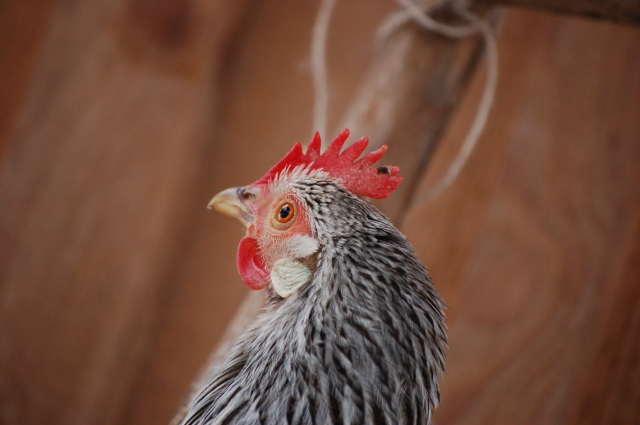
How do chickens get frostbite?
Even though frostbite is caused by frozen flesh, it is more a management issue rather then cold temperature induced. Moisture in the air will gather on the comb and wattles of a bird, encouraging freezing of the tissue. When the fluid in the cells of the tissue freeze, the blood clots, allowing no oxygen to get to the cells. This causes the tissue damage that we call frostbite.
There are several other factors that can contribute to frostbite as well, including air temperature, wind chill, exposure time, altitude, and circulation. Here’s a brief summary of how each of those factors can contribute to frostbite:
- temperature- colder temperatures cause the tissue to freeze faster, increasing the chance of frostbite
- wind chill- the wind chill makes the air feel colder and cold air that blows across the skin makes the tissue freeze
- exposure time- the more time comb, wattles, and toes are exposed to cold air and wind chill, the more likely they are to freeze
- altitude– the affect of all these factors are accentuated at higher altitudes
- circulation- poor circulation means that blood has been restricted to certain areas of the body, increasing the chance of those appendages freezing
All of those factors can cause cold stress as well. When a chicken is experiencing cold stress, it will restrict blood flow to its appendages to help conserve body heat. Since heat is dissipated throuh a chicken’s comb and wattles, those appendages get restricted first. Knowing how to recgonize when your chickens are experiencing cold stress can help you identify when they are more prone to frostbite.
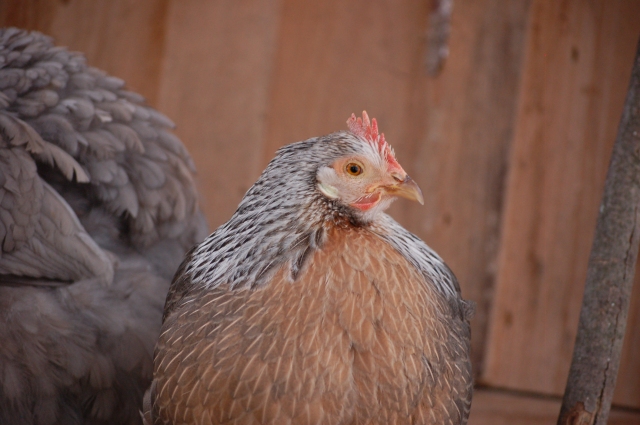
How to Prevent Frostbite
Some factors that cause frostbite can be controlled, while other factors must simply be prevented against. Temperature, wind chill, and altitude are not factors that we can change. However, we can help reduce exposure time and help increase a chicken’s blood circulation.
Sooner or later every northern homesteader will have to deal with frostbite in their flock, but there are some ways you can prevent frostbite or keep frostbite cases from becoming worse. Here are some ways you can prevent frostbite through both flock management and coop care:
In the Coop:
- Have good ventilation– Ventilation allows moisture laden air to escape, and remember, warm air rises and it carries more moisture than cold air.
- Prevent excess moisture build up– Clean up water spillage, puddles, damp litter, etc…
- Clean up the droppings regularly- Moisture in the droppings (droppings are up to 85% water!) evaporates adding to the moisture in the air. Fermented feed helps with this by reducing the amount of dropping produced by each bird.
- Build a wind block around the enclosure– Winterizing your coop and enclosure by putting up a wind block can help reduce the exposure to wind chill.
- No mess drinkers– Heated nipple drinkers are helpful during the winter since they reduce the chance of a chicken’s wattles getting wet when it drinks.
For the Chickens:
- Apply an all natural salve to the combs and wattles– Oil based lubricants trap moisture next to the skin, increasing the chance of frostbite. Instead, choose salves that are mostly beeswax which will help prevent moisture from freezing next to the skin. I like to use all-natural, wax-based salves.
- Add ground ginger to your flock’s feed or offer it free-choice- Ginger is a spice that stimulates circulation in the body. For more natural supplements to give your flock during the winter, check out this list!
- Provide wide perches– Wide perches allow a chicken to cover its with it feathers toes while roosting, which will help keep its feet warm.
- Encourage activity to stimulate circulation- Use these healthy boredom busters to keep your flock active and stimulated! Activity encourages proper blood flow.
- Have a thick layer of litter in the coop and run– Thick, insulating litter helps reduce exposure to cold surfaces.
Chickens conserve heat in cold weather by reducing the blood flow to their combs, wattles, and feet. Cold hardy breeds, such as ones with small or pea combs and feathered legs, are less likely to get frostbite. Crested breeds are also a good choice, although they tend to have more problems with lice and mites.
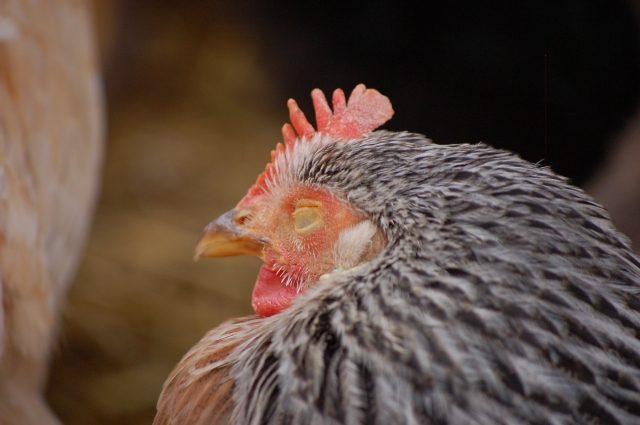
Dealing with Frostbite on Roosters
Roosters tend to be more prone to frostbite than hens. At night, hens will tuck their head under their wing, helping prevent frostbite. Some say that roosters don’t tuck their heads under their wings, thus making them more likely to get frostbite. I have found that my roosters tuck their heads in their wing just like the hens, but their combs are so tall that they are still exposed to the air.
Since roosters often have larger combs and wattles than hens, they are more prone to getting frostbitten comb spikes and wattles. It is especially important to keep roosters that you plan on breeding or showing from getting frostbite. Severe cases of frostbite can cause infertility in cocks.
A rooster’s wattles are likely to get frostbite if the rooster is a messy drinker. Water dripping onto a chicken’s wattles encouarges frostbite to occur when the moisture freezes on the skin. Roosters will need extra maintenance and frostbite prevention during the winter.
The best way to prevent frostbite on your rooster’s comb and wattles is to apply a beeswax salve to the comb and wattles frequently during below freezing temperatues. Remember, even if the temperatures aren’t below freezing, the real feel can still be below freezing and cause frostbite. The beeswax salve can help prevent moisture from freezing next to the skin.

Signs of Frostbite on Chickens
Although you will want to prevent frostbite as much as possible, you should still be on the look out for signs of frostbite in your flock during extremely cold weather. A comb, wattle, or toe that is white colored is usually the first sign of the beginning stages of frostbite. The white is from the tissue initially freezing. If it stays frozen it could cause gangrene.
Here are some other signs that can indicate frostbite:
- black tiped combs
- black rimmed wattles
- lethargic behaviour
- limping (frostbitten toes)
Limping can also be a sign of bumblefoot, so check to see if that is possibly the cause. Check out this post on treating chicken diseases naturally for more information on bumblefoot.
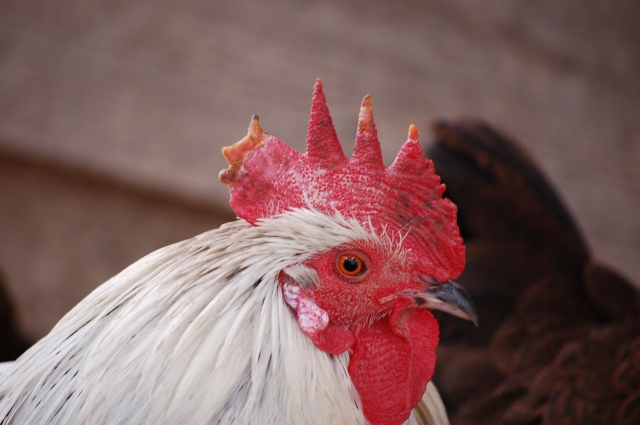
How to Treat Minor Frostbite on Chickens
Sometimes chickens will get minor frostbite, but then the weather warms up and they are able to rejuvenate the frostbitten area as the flesh unthaws and normal blood flow returns to that area. If the weather remains cold and you start to see signs of frostbite, you may have to address the frostbite so that it doesn’t become severe.
Frozen tissue will usually feel cold and sometimes hard or brittle to the touch. To treat minor frostbite cases, warm up the area with a warm, damp cloth for 15 minutes or until it is unthawed. Do not rub! Apply a healing salve once it is unthawed and isolate the bird until the tissue returns to normal coloring.
If the tissue has already unthawed when you find it, it will look puffy, hot, and swollen. Apply salve very carefully and try to prevent the tissue from re-freezing. Constant freezing and unthawing of tissue can be more dangerous than just leaving the tissue how it is.
Tissue that is severely frozen will also form blisters that are cold to the touch and are filled with a yellow fluid. Do not break the blisters, since they are protecting the tissue underneath.
Limping can be a sign of frostbitten toes. If one of your chickens is limping, pick it up and look at its feet. Feel its toes and see if any of them feel cold or look white. In severe cases, the toes may already look blue or purple. Frostbitten toes can be warmed up and treated in the same way as frostbitten combs or wattles.
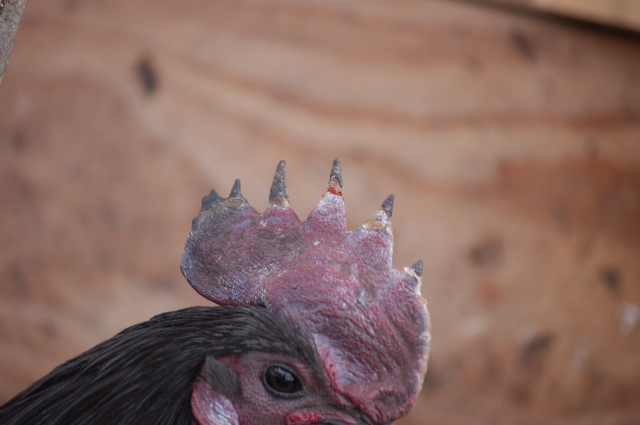
How to Treat Severe Cases of Frostbite on Chickens
Serious cases of frostbite can be so painful the chicken will stop eating, drinking, and participating in normal behaviours. You will want to treat progressed cases of frostbite as soon as possible before the flesh becomes infected and turns to gangrene.
As long as the frostbite does not become infected, seriously frostbitten appendages will simply turn black, shrivel up, and fall off. What ever you do, don’t pull the black off! It is actually protecting the tissue underneath. To unthaw serious cases of frostbite, first move the chicken to a warmer area. It doesn’t need to be tropical warm, just above freezing and warmer than the outside environmet. Next you will need to slowly unthaw the frostbitten appendage.
How to Unthaw Frostbite:
- Feet & Toes– Feet or toes that are frostbiten can be soaked in lukewarm water (100° F) for around 20 minutes.
- Combs & Wattles– Combs or wattles can be slowly unthawed using a warm washcloth that is held gently on the appendage. Don’t use direct heat to warm the area, you want to unthaw frostbite gradually.
Once the appendage has been unthawed, spray it with Vetericyn to prevent infection. Keep the chicken in a temperate environment with food, water, and soft litter. Chickens with frostbitten feet will benefit from nice, soft towels placed on the bottom of their pen. Make sure the chicken is eating and drinking properly. The chicken should not need supplemental heat as long as the environment stays above 45°F.
Spray the frostbitten area every day and wait for the flesh to heal or for the dead flesh to fall off. Sometimes the dead flesh will fall off and leave a bloody wound that will need to be treated. Gently wipe away any blood, spray with Vetericyn, and apply a healing wound salve. Once the wound has healed and the temperatues are above freezing, you can reintroduce the chicken back to the flock.
It may take months for severe cases of frostbite to heal and appendages that are lost due to frostbite don’t generally grow back.
Recognizing Gangrene Infections:
Frostbite that isn’t cared for will get infected, causing gangrene. Gangrene can spread and get into the bloodstream, becoming fatal. Signs of infection include redness, swelling, oozing, and foul smelling discharge.
Antibiotics will be needed if the frostbite becomes infected. In very severe cases, you might have to surgically remove the appendage to prevent the spreading of the infection. Surgical removal is best left to a professional avian vet.
How to Prevent Future Frostbite
To help prevent infection in already frostbitten areas, you can continue to spray the area with Vetericyn. Make sure to spray the appendage only when the outside temperature is above freezing, otherwise you would be defeating the purpose by applying moisture to the skin. Also, be careful not to spray in the eye or ear of the bird.
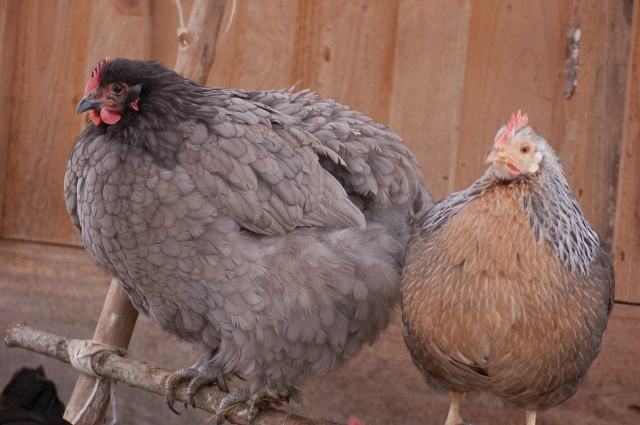
As a northern homesteader, you should always be prepared to deal with frostbite. Thanlfully, frostbite can easily be prevented, recognized, and treated. Keeping a nice draft-free, well-ventilated coop for your flock during the winter can go a long way in preventing frostbite and cold stress. Learn to recognize the earliest signs of frostbite and how treat to it before it becomes too serious. Know how to treat severe frostbite cases effectively and painlessly. Having these skills will help you be prepared to deal frostbite in your homestead flock!
Don’t miss any other tips for keeping your homestead flock healthy productive, even on a norther homestead! Join our modern pioneer newsletter community and get a free copy of our ebook on Raising Chickens Like a Pioneer!
Warm wishes from the flock!
by Alexa
















Denise
January 2, 2018 5:00 pmAs a farmer and owner of a large backyard flock, this post is so timely with the below freezing temps here in the Mid-Atlantic. I emailed the post to myself so that I can print it and add it in our “animal care” file.
ThePioneerChicks
January 4, 2018 9:56 amWe have been having some very cold nights as well! Glad this post was helpful!